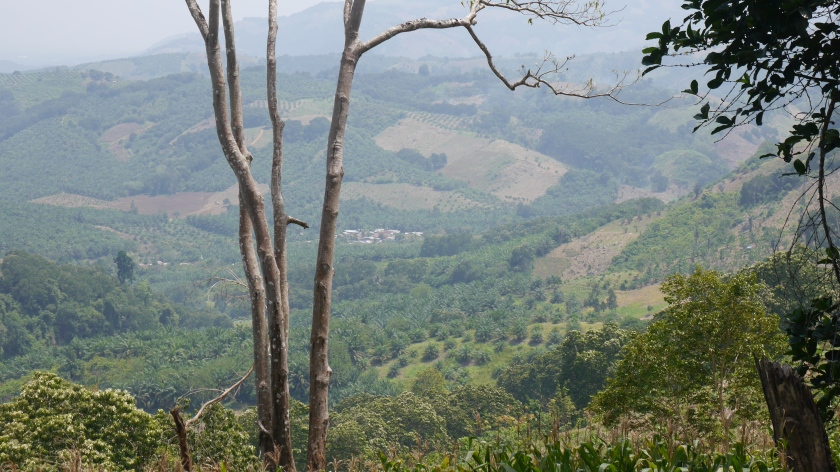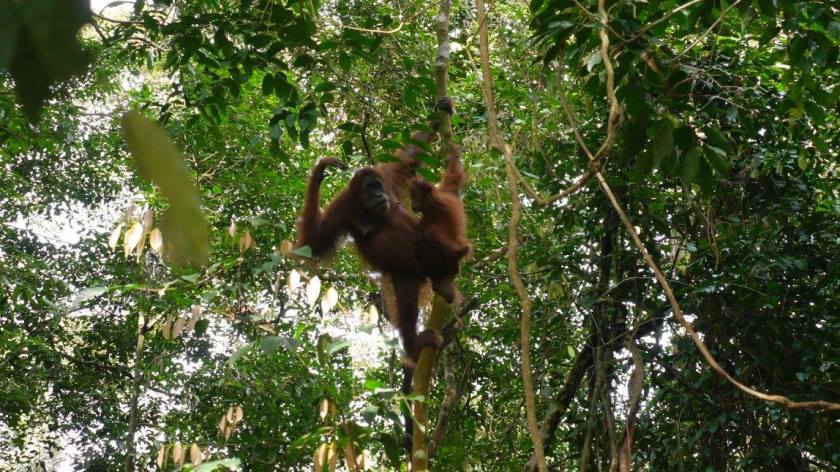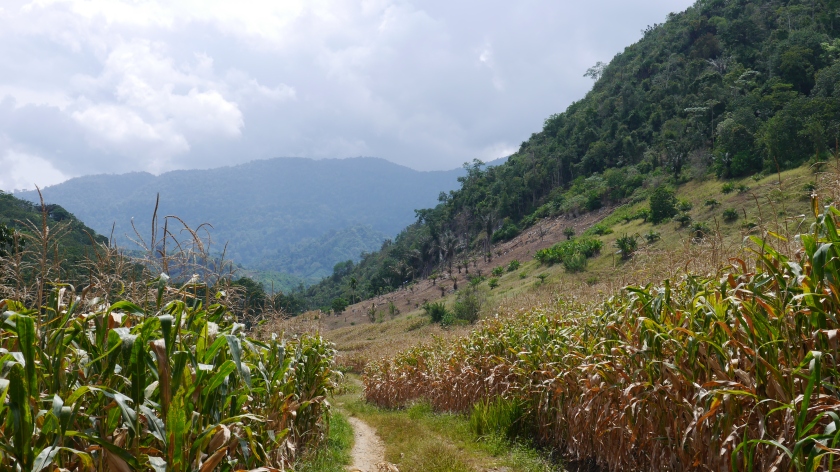
One of the uncomfortable thing about doing fieldwork is the constant feeling of being unsure of myself and my fieldwork. For your information, I am doing fieldwork on a weekly basis*. I am based with my family in the capital of Southeast Aceh, Kutacane, because it is more convenient for my family’s daily life. It provides the proximity to the central market and my son’s daycare (or PAUD) as well as the availability of decent brick house for rent. Not that I am saying houses here are not decent, but the number of houses for rent is very limited, I could count with two hands. Most people here live in wooden houses and those are more rarely being rented out. As I am living with my family, it is a reasonable choice to rent our own house instead of staying with a host family as we need some privacy and we don’t want to depend on a host.
I am doing a “mobile” and multi-sited ethnography, in which I stay in villages that I have chosen as my case studies every weekdays. In this two-plus months initial – and I must say, deep introductory – stage, I stay in one village for a week or two (well, now I am also considering to stay longer) and I come home every weekend. Less frequently so, I also hang out and travel with the national park officers and the conservation NGO, or go six hours away to renew my research permit and sometimes attend meetings at the headquarter of the national park (but not often).
You can imagine how sometimes all of my “moving around” makes me feel like I am all over the place, although I have to say that I’ve quite enjoyed it, actually. Also, I have mentioned that I am at home in Kutacane (almost) every weekend with my family, which brings me the constant switch-on and switch-off of the fieldwork mode, and the constant perpetuation and reminder of how it’s getting difficult to leave my three year-old. I mean, he’s fine but it’s getting difficult for me. Putting that aside, some questions arises on daily basis as I have this nagging “image” or perhaps “fantasy” around fieldwork due to my tendency to absorb the “rumors” and “myths” on fieldwork that makes me wonder whether what I am doing is fieldwork enough because I don’t know if I am immersive enough.
Is this fieldwork? Is this how fieldwork is supposed to be? Is my fieldwork good enough, am I doing enough? Am I wasting my time? How can I organize my fieldwork and my “data” better? Is it fine to blog during fieldwork (er, on weekends?) – not necessarily about my research, or is it a distraction? (hah! what am I doing right now?). I think what worries me the most is when I am feeling overwhelmed with the richness and complexity of the story and I am not sure whether I’ve document and organize it properly … and honestly some nights I was too tired to write my fieldnotes every single day, some nights I’ve only written one sentence, some moments will linger on my mind (fingers crossed) … I confess my self-discipline in journaling is my biggest problem … and whether it is okay to take some time away and braindump and rethink – shouldn’t I be fieldworking?
It is completely healthy to acknowledge these constant state of fieldwork-doubt, but it is also essential to be honest about the occasional feeling of being good enough. The “wow-I-can’t-believe-I’m-so-lucky” fieldwork happenstance, the shocking truth-bombs that were just casually being laid bare before me, and the genuine – yes, genuine, I think this is what I am feeling grateful about the most – relationship that are blossoming with my foster parents and brother.
It is my responsibility and it is the most important thing that I am not only “extracting” data from my surrogate parents and brother who are my interlocutors (informants?) and “gate-openers” to the rest of the community. I have to genuinely care about them like they’re my own parents, knowing their families like my own families, reciprocate their trust, and form a life-long relationship that goes beyond fieldwork. What a commitment, and to be honest I don’t find it very easy (but also not impossible), which is why I’ve limited myself and only have three foster families and one foster brother (and I am nervous that one of them is probably withering away). Sometimes, I am so reluctant to get myself into the whole day-to-day familial bonding (and anxieties) because honestly I don’t even get along perfectly well with my “real” family (like my “dynamics” with my parents and siblings). But, when my new foster families trust me that I am and will be there when they needed me, these are the milestones that I treasure the most from my fieldwork. These foundational relationships are my strength and later on hopefully (but I am not too ambitious) the whole village will also be very familiar with me – the weirdo student that keeps trying to do what they are doing and hang out with them for whatever reason and asking basic questions and talking nonsense – as part of their community.
Sometimes, I wonder whether people will think that I am not efficient with my fieldwork or whether or not I am getting my priorities right. But why do these imaginary people even care? I believe every fieldwork is different. I am sure nobody is thinking about how my day-to-day minutae details of fieldwork have to be conducted. I shouldn’t be looking at my own experience through other fieldworks’ “rosy-tinted glasses”. I mean, I shouldn’t compare what I am going through with the imagination of what other “awesome” fieldworkers were going through. I don’t even know for sure what was going on with them back then and how many of the stories are curated versions of their fieldwork the way people these days curated images of their life in their instagram feed. I have to forget about other researchers right now and bring the question back at myself, “what do I think is best for my research?”
Which is why, for now, I am bidding farewell to Malinowski or Geertz or Margaret Mead or Jane Fajans, or you-name-it. Goodbye the coming-of-age “badge of honor” of fieldwork that feels like a distant and elusive enigma like heaven and hell in the afterlife. Welcome day-to-day personal questions, awkward minute-by-minute indecisiveness, unsure feelings and uncertainty. Welcome some merciful self-appreciation to keep me being proportional and fair with myself and keep me going.
Welcome fieldwork-acceptance, I have some work to be done.
*as suggested and done by other “mom-PhD-doing-fieldwork”, thanks Monique Nuijten (WUR) and Tania Li (University of Toronto). Also thanks to Annet Pauwelussen (Leiden University) for sharing the mom-PhD fieldwork feelings.



